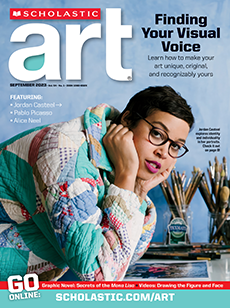After World War II, industries like auto manufacturing boomed in America. And for the first time in years, people had the money to indulge in big purchases like the enormous, luxurious Cadillac.
Cadillac of Bounty
Will Ryman, Cadillac, 2014. Courtesy of WR Studio Inc.
What do this sculpture’s materials say about our culture?
Courtesy of WR Studio Inc.
Sculptor Will Ryman wanted to re-create this iconic mid-century American status symbol. He assembled his own life-size classic 1958 Cadillac, capturing all of the details—from the massive engine to the delicate tail fins. But he used disposable materials: paper towels and resin. The fragile materials connect the ideas of luxury and disposability. He seems to say that Americans no longer value long-lasting products, instead favoring those that are meant to be discarded, like paper towels.
Text-to-Speech
